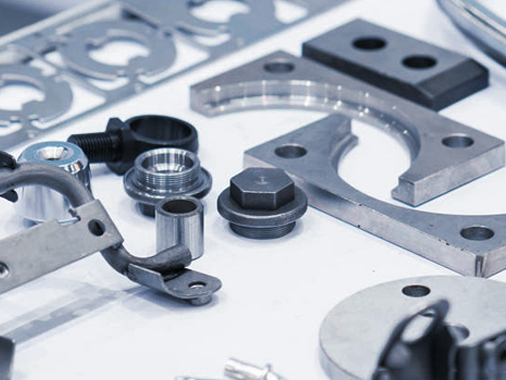Case Study: Tackling Special Design Challenges Through Custom Sheet Metal Fabrication+ View more
Case Study: Tackling Special Design Challenges Through Custom Sheet Metal Fabrication
+ View more
Date:2024-03-27 16:00
In the realm of custom sheet metal fabrication, each project can pose its own set of unique design challenges. These challenges may involve complex geometries, high precision requirements, or the use of special materials. Successfully overcoming these difficulties requires fabricators to have innovative capabilities and technical expertise. This case study explores a real-world project to demonstrate how specialized design issues were resolved through custom sheet metal fabrication.
Project Background
A manufacturer of aerospace components was faced with a challenge: they needed to produce a lightweight, high-strength, and geometrically complex bracket for a satellite launcher. The bracket had to withstand extreme temperature changes and intense vibrations while maintaining stability and durability in space environments.
Design Parameters and Requirements:
- Shape: Non-standard complex curvature
- Dimensional tolerance: ±0.1mm
- Material: Aluminum Alloy 6061-T6
- Material Thickness: 3mm
- Surface Treatment: Anodized
- Tensile Strength Requirement: At least 290 MPa
Solution Steps
Step One: Precision Design and Simulation
Advanced CAD and CAE software were employed for three-dimensional modeling and mechanical analysis to ensure that the design met all functional and performance criteria. Geometry optimizations were made to improve manufacturability and structural integrity for unreliable or overly complex design areas.
Step Two: Material Selection and Pre-Treatment
6061-T6 aluminum alloy was chosen because it offers an excellent strength-to-weight ratio suitable for aerospace applications. Prior to fabrication, the material underwent pre-treatment including annealing and surface cleaning to eliminate internal stresses and ensure quality during processing.
Step Three: High-Precision Cutting and Forming
Laser cutting technology was used for precise contour and hole cutting of the sheet material. Subsequently, five-axis CNC machines accomplished high-precision bending and forming to realize the manufacturing of complex shapes.
Example Processing Parameters:
- Laser cutting tolerance: ±0.05mm
- CNC machine positioning accuracy: ±0.01mm
Step Four: Welding and Assembly
Considering the space environment, TIG welding was selected to join the components due to its ability to provide uniform welds with minimum heat-affected zones. Fixtures were used during welding to maintain accurate alignment of the parts.
Welding Parameters Example:
- Welding current: 120A
- Welding speed: 3mm/s
Step Five: Surface Treatment and Quality Inspection
After fabrication, the bracket was anodized to enhance its surface hardness and corrosion resistance while also providing the desired appearance color. A comprehensive quality inspection of the bracket followed, including dimensional checks, weld quality assessment, and performance testing.
Example Surface Treatment and Inspection Parameters:
- Anodic film thickness: 25μm
- Dimensional inspection equipment: Laser scanning probe
- Inspection tolerance range: ±0.05mm
Successful Delivery
Following the steps outlined above, the fabricator successfully produced satellite launcher brackets meeting all specification requirements. Rigorous development processes and attention to detail ensured successful product delivery. The brackets performed exceptionally well in their practical application, underscoring the effectiveness of custom sheet metal fabrication in resolving complex design problems.
Conclusion
This case demonstrates how special design challenges in custom sheet metal fabrication were successfully navigated through precise design, careful material selection, high-precision machining, meticulous welding, and strict quality control. Each step was key to ensuring that the final product met stringent demands, allowing it to stand out in a highly competitive market.
Share to:
Recommend wonderful blog posts

